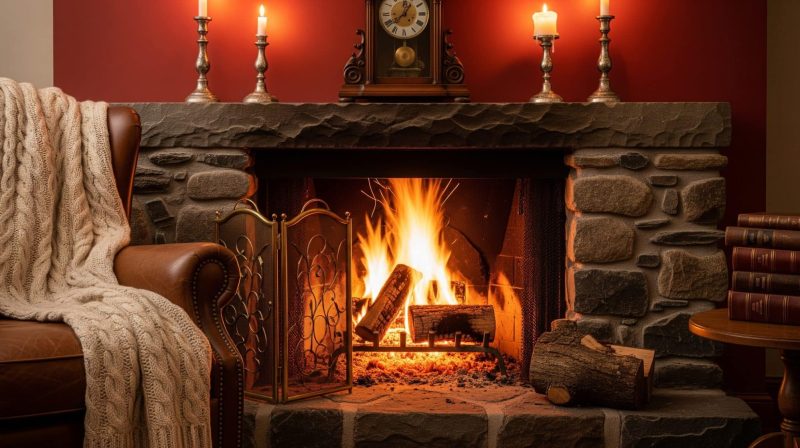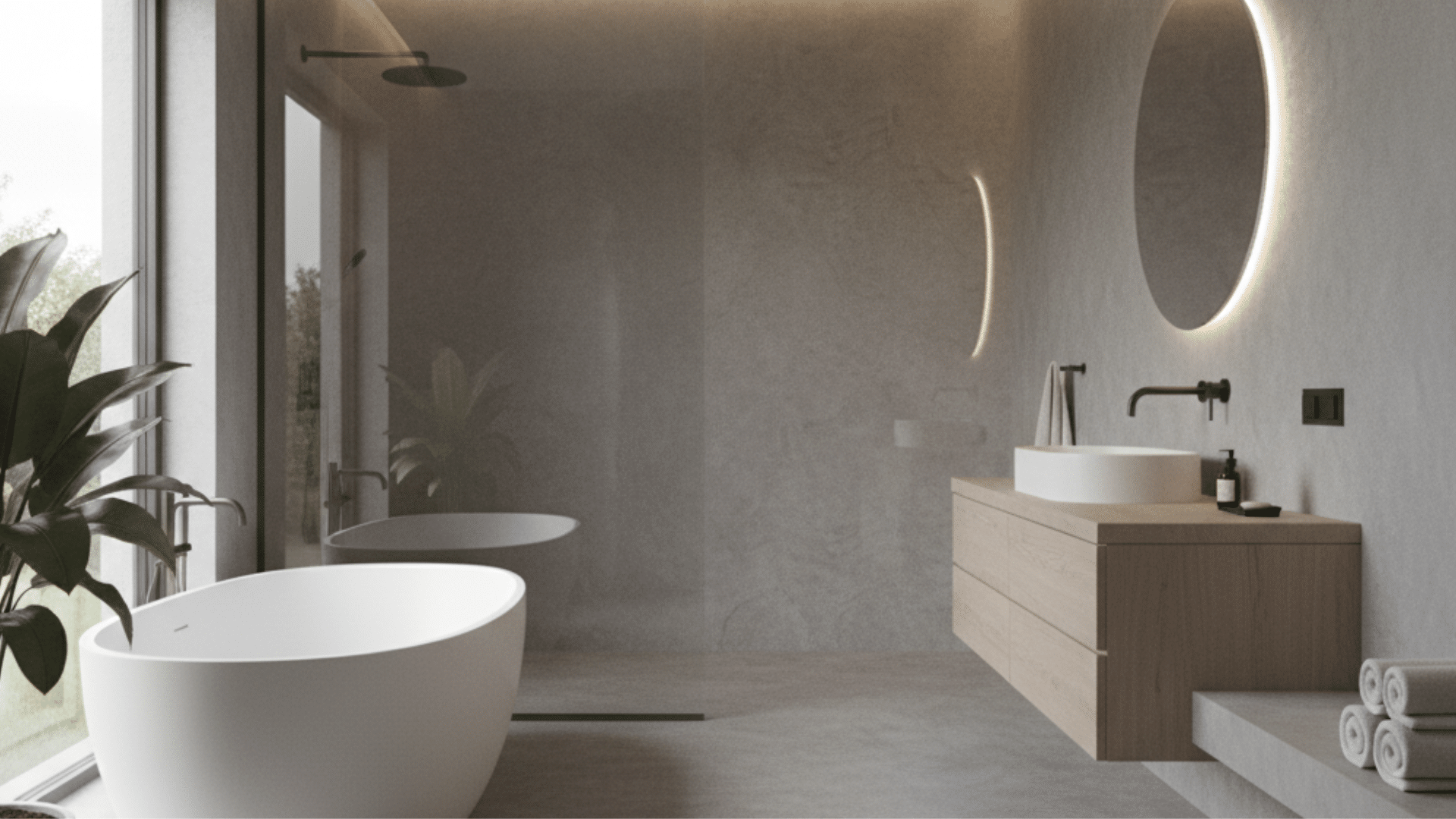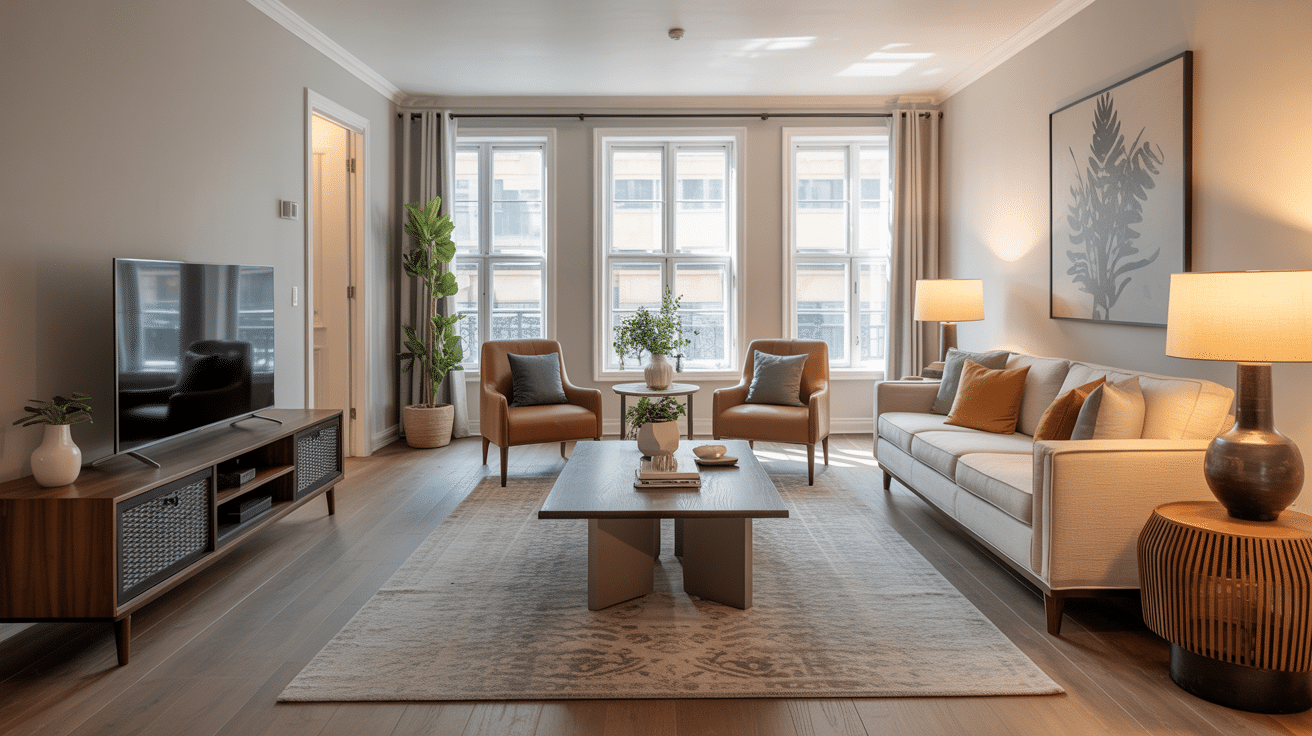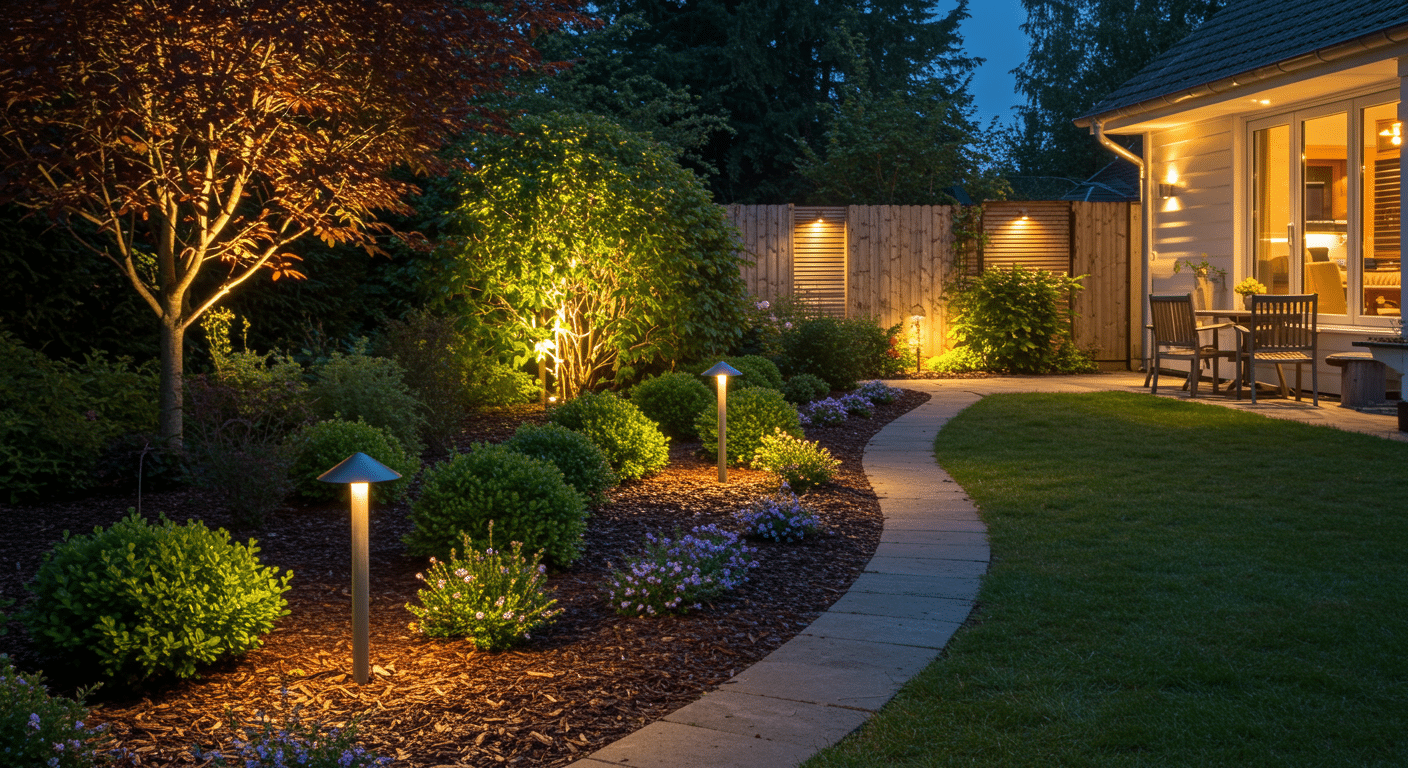Ever wondered what makes your fireplace work so well? I used to think it was just a box with fire in it. Boy, was I wrong!
A fireplace has many working parts that team up to keep your home warm and safe. From the firebox that holds your logs to the chimney that sends smoke outside, each piece has a job to do.
Some parts you can see, like the mantel above your fireplace. Others hide behind walls, like the flu that guides smoke up and out.
In this guide, I’ll walk you through every part of a traditional fireplace. You’ll learn what each component does and why it matters. By the end, you’ll know your fireplace inside and out.
What are the Main Parts of a Fireplace?
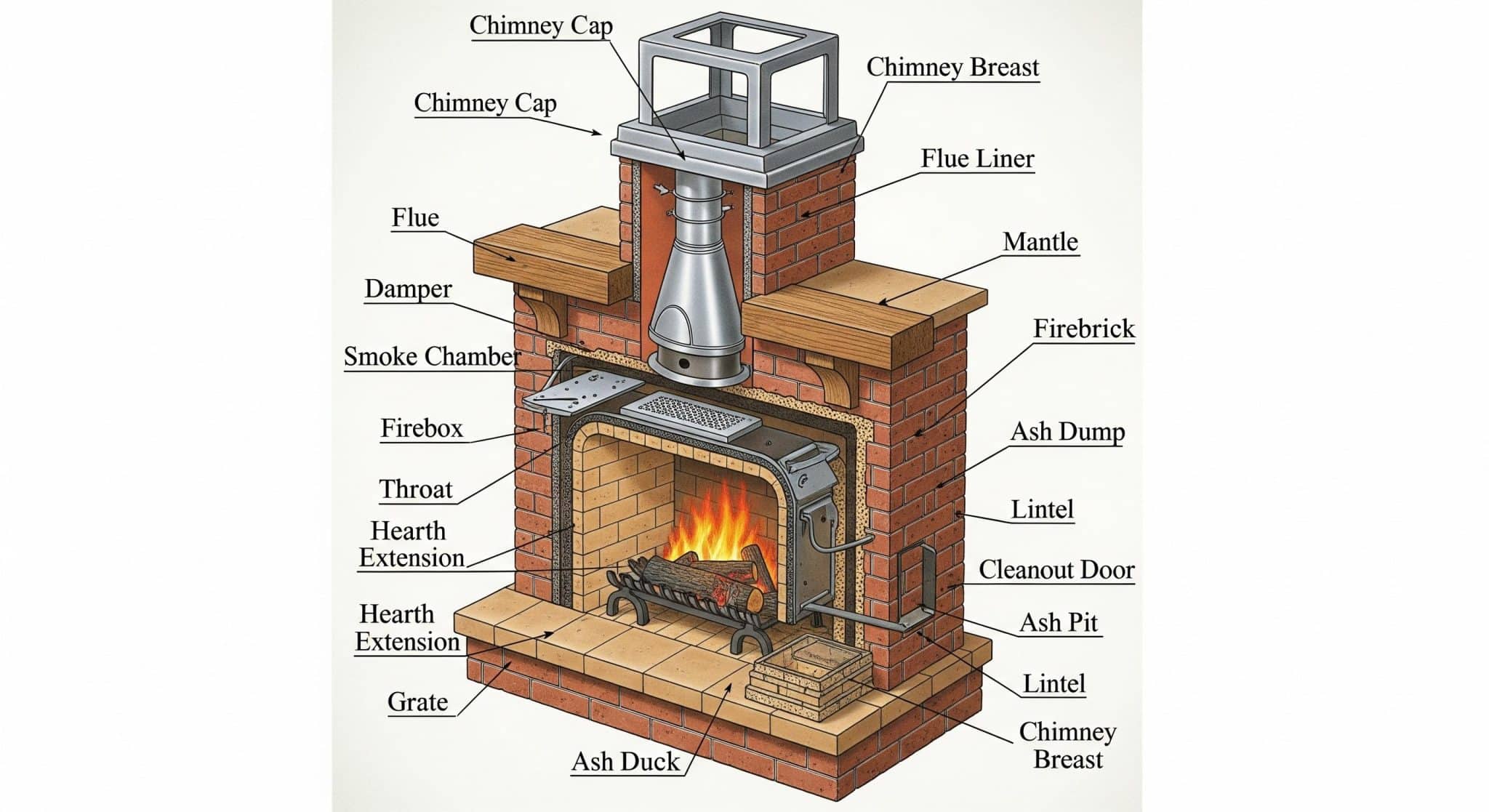
A traditional fireplace has several key components that work together. Think of it like a team where everyone has a specific role.
Here are the main parts of a fireplace you need to know:
- The Firebox – This is where you build your fire. It’s the chamber lined with fire-resistant materials like brick or metal.
- The Hearth – The floor area in front of and inside the fireplace. It protects your home’s flooring from sparks and heat.
- The Mantel – The shelf above the fireplace opening. It’s both decorative and functional.
- The Flue – A passage inside the chimney that carries smoke and gases outside.
- The Damper – A movable plate that opens and closes the flue. It controls airflow and keeps cold air out when not in use.
- The Chimney – The vertical structure that extends above your roofline. It creates the draft that pulls smoke up and out.
- The Chimney Cap – A cover on top of the chimney that keeps rain, animals, and debris out.
Each part depends on the others. When one fails, the whole system suffers. That’s why understanding all components helps you maintain your fireplace properly.
Complete Fireplace Component Overview
In this section, we’ll introduce all the essential parts of a fireplace that form the base and structure of any traditional fireplace.
1. The Firebox
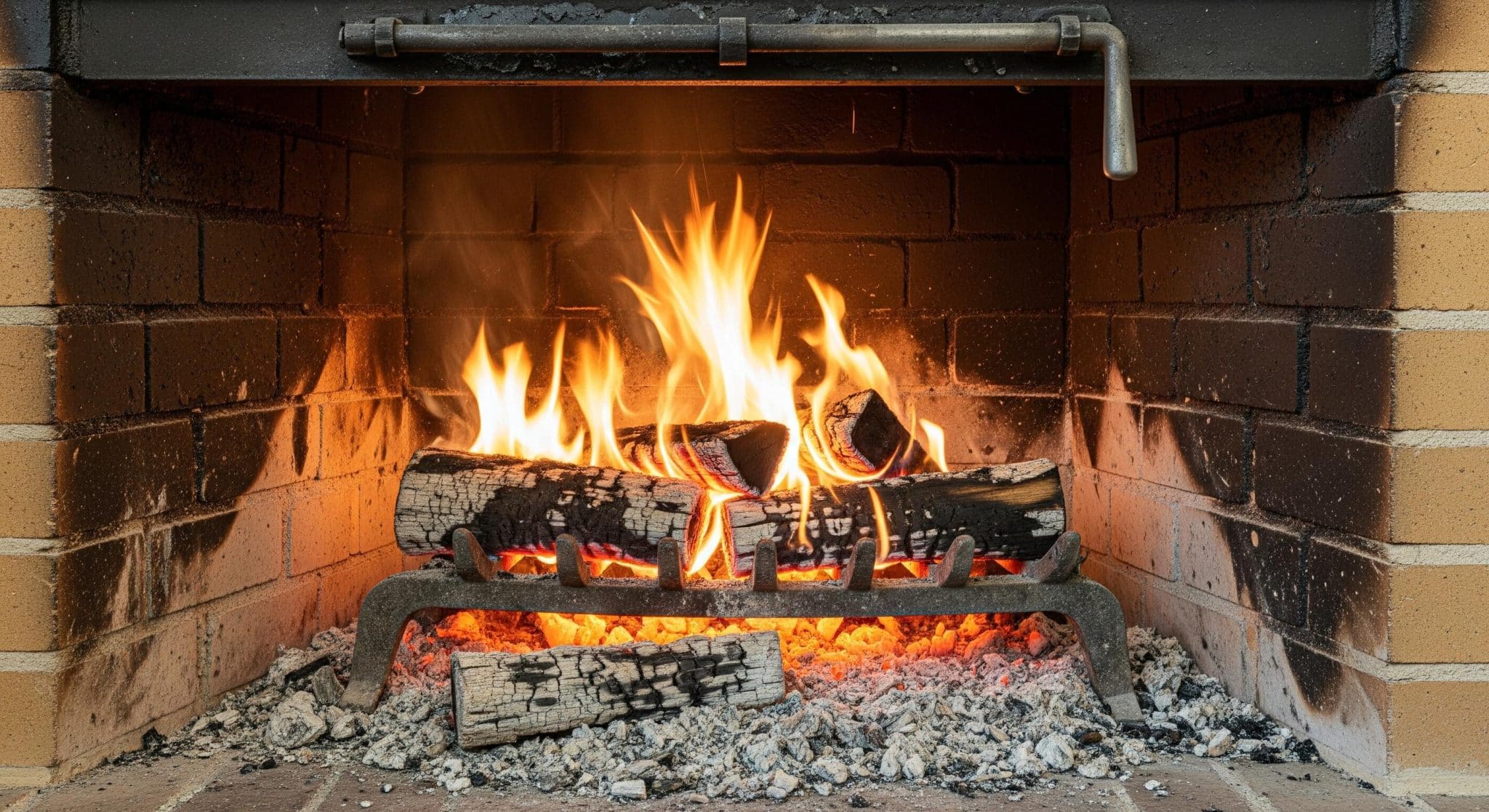
The firebox is your fireplace’s main stage. This is where logs burn and create the warmth you love. Most fireboxes use brick, stone, or metal lining to handle extreme heat.
You’ll find two main types:
- Masonry fireboxes built with bricks and mortar
- Prefabricated units made from metal and installed as complete systems
The firebox needs to be deep enough for proper burning, but not so deep that heat gets lost. Most measure 16 to 20 inches deep.
The back wall usually slopes forward to reflect heat into your room. To check for any damage, regularly inspect the area for ash and ensure that any collected ash is removed.
2. The Hearth

The hearth serves two purposes. First, it protects your flooring from hot embers and sparks. Second, it gives you a safe area to tend your fire.
Building codes require specific hearth sizes:
- The hearth must extend at least 16 inches in front of the fireplace opening
- It should extend 8 inches on each side of the opening
- For larger fireplaces, these distances increase
Materials like brick, stone, tile, or concrete work well for hearths. They handle heat without cracking or burning. Clean regularly to ensure the longevity.
3. The Flue
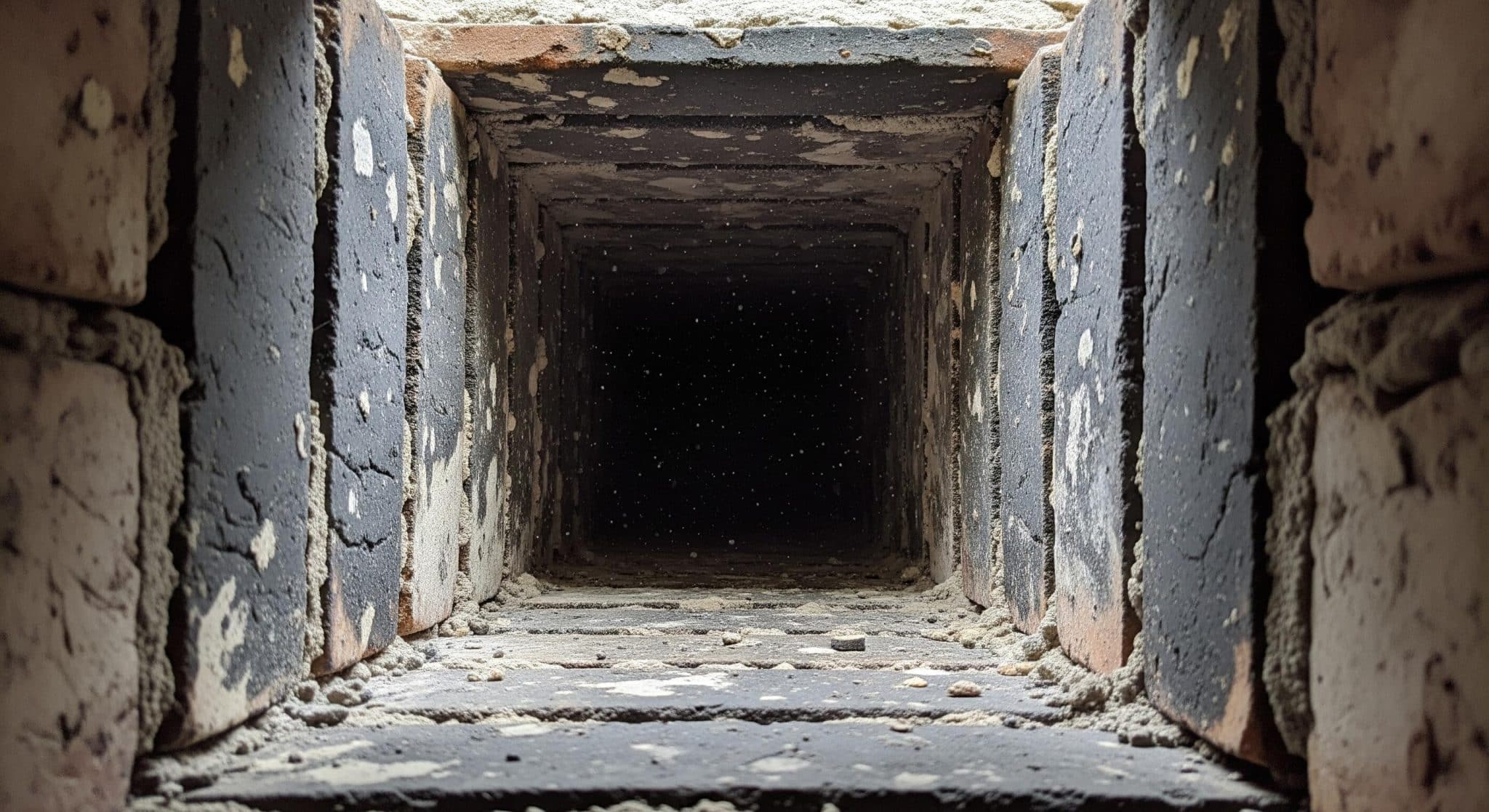
The flue is like a highway for smoke and gases. It runs from the top of your firebox to the top of your chimney.
Proper flue size matters; too small and smoke backs up into your room, too large and you lose heat efficiency. Most flues have a clay tile or metal liner. This protects the chimney structure from heat and corrosive gases.
Over time, these liners can crack or deteriorate and need replacement.
4. The Damper
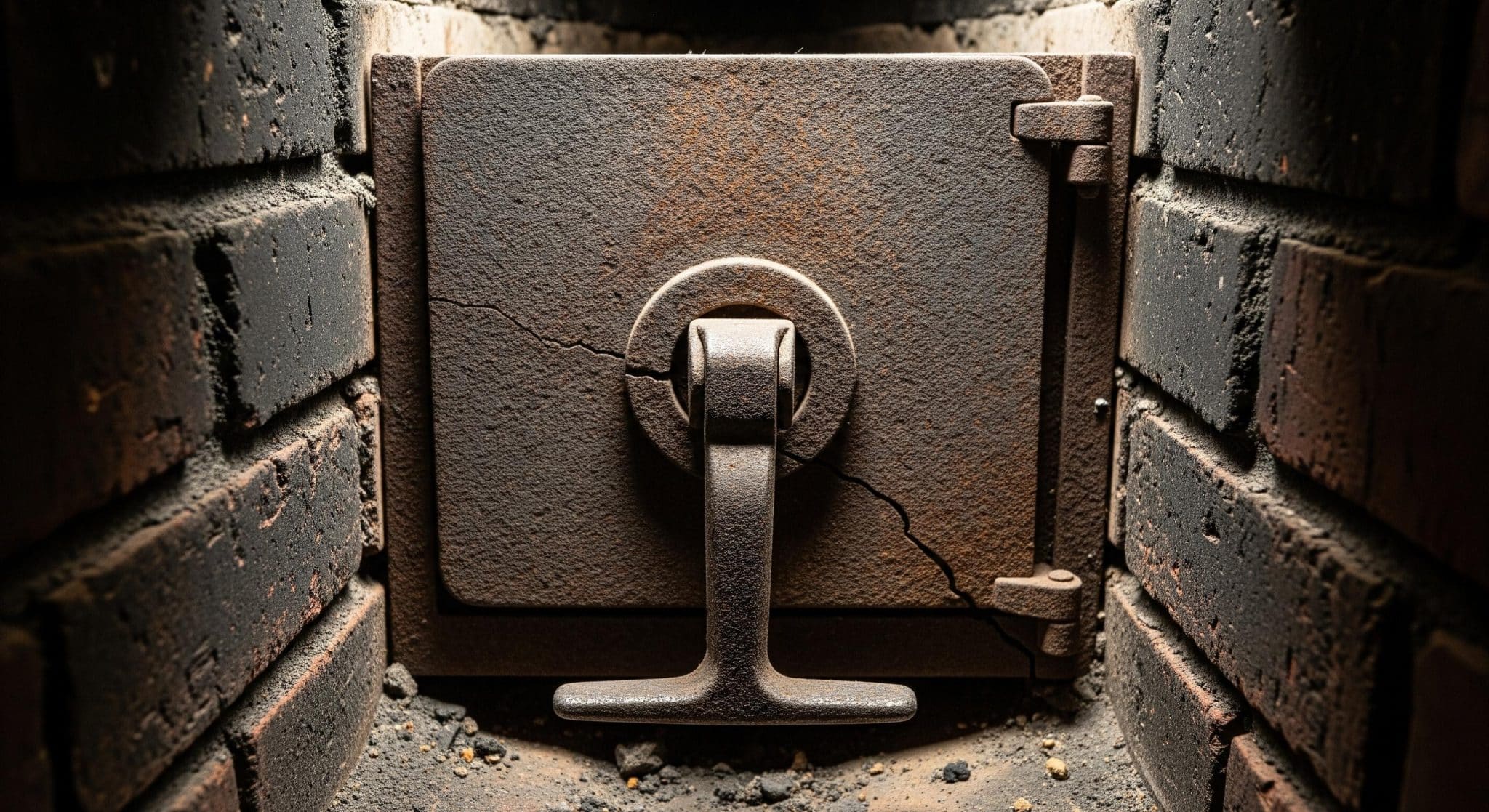
The damper controls airflow through your chimney. When open, it allows smoke to escape. When closed, it keeps cold air from coming down the chimney.
You’ll find two main types:
- Throat dampers sit just above the firebox
- Top-sealing dampers are installed at the chimney top
Top-sealing dampers work better at keeping cold air out. They also prevent animals from entering your chimney.
5. The Chimney
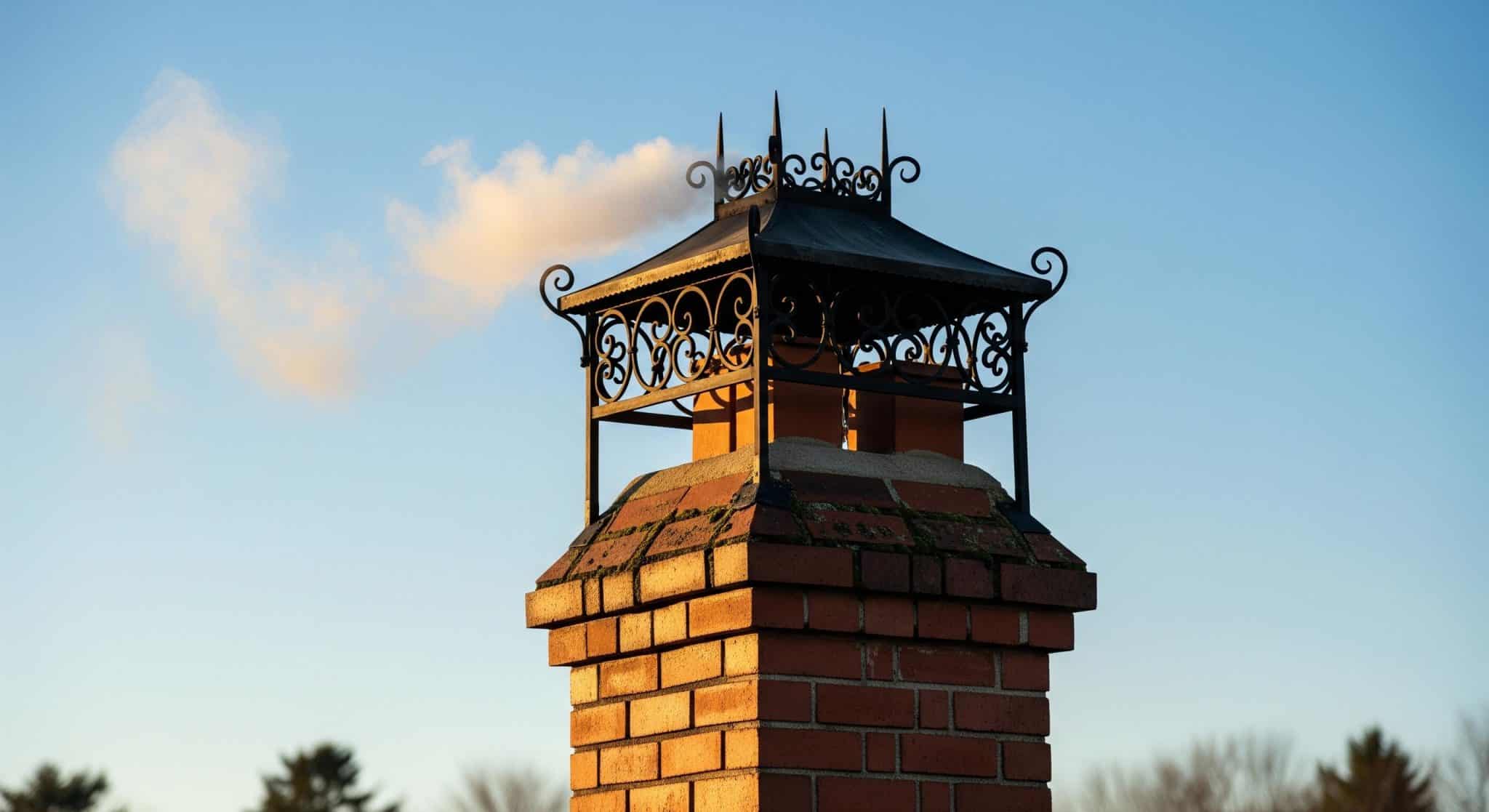
Your chimney creates the draft that pulls smoke up and out of your home. Hot air rises naturally, but the chimney helps this process work efficiently. The height of your chimney affects how well it works.
Most need to extend at least 3 feet above the roofline and 2 feet higher than anything within 10 feet.
6. Chimney Cap and Crown
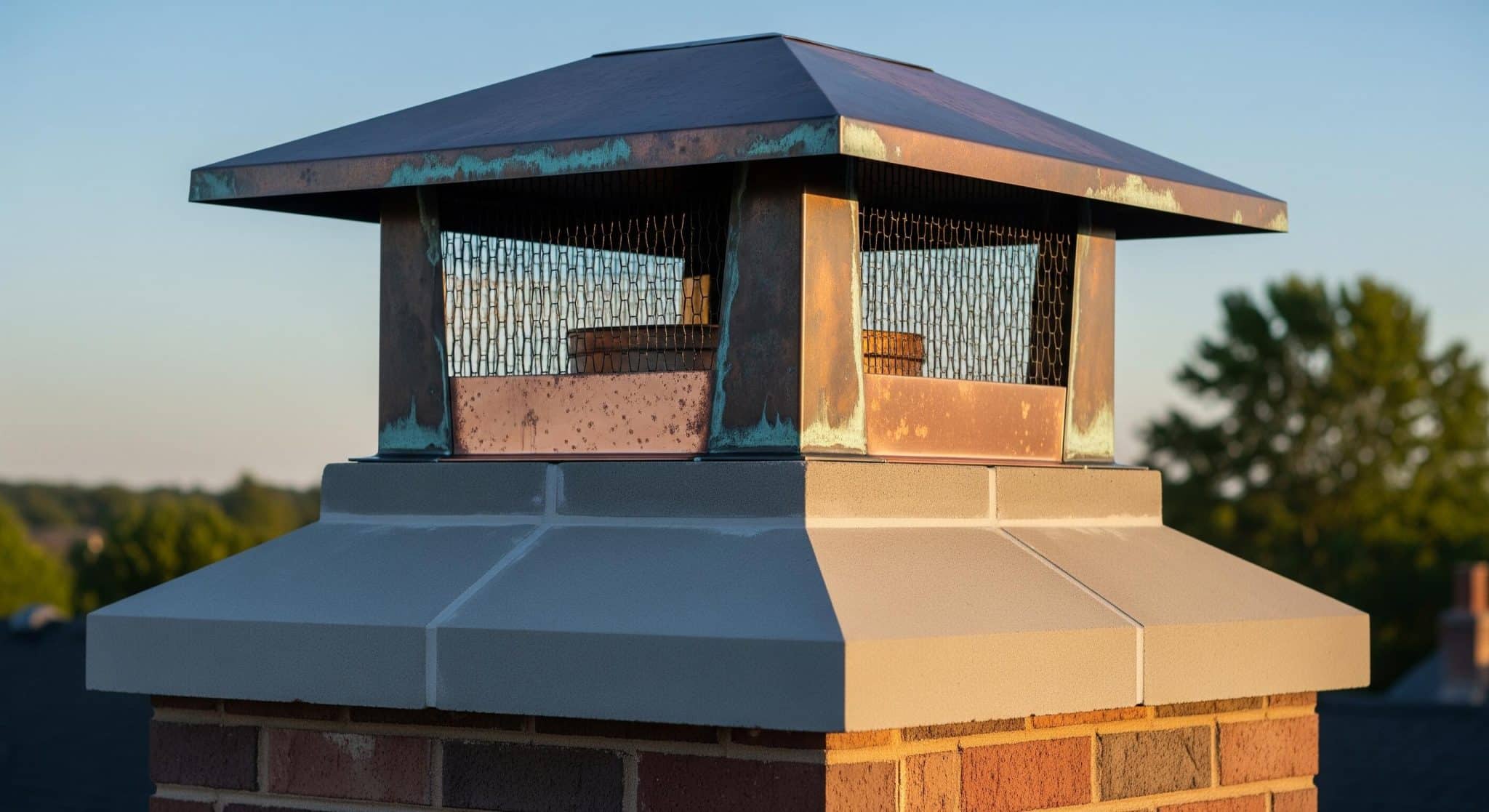
The chimney cap sits on top of your flue. It keeps rain, snow, and animals out while still allowing smoke to escape.
A good cap has a screen to stop birds and squirrels from nesting inside. The chimney crown is a concrete slab that covers the top of the chimney structure. It slopes away from the flue to shed water.
Cracks in the crown allow water to seep in, causing damage.
7. The Smoke Chamber and Shelf
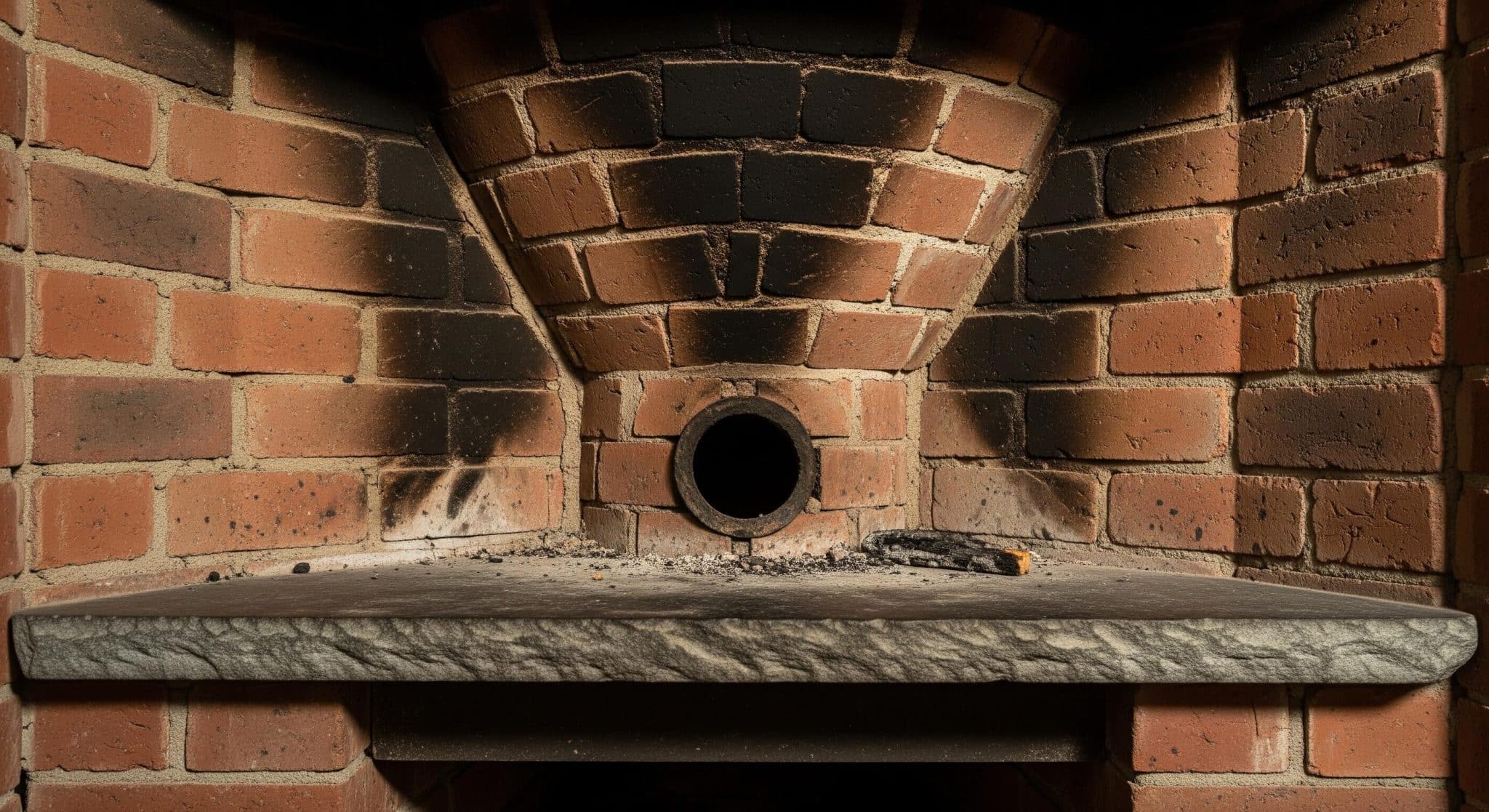
Above your damper, you’ll find the smoke chamber.
This area funnels smoke from the wide firebox opening into the narrower flue. The smoke shelf sits at the bottom of this chamber. The smoke shelf catches downdrafts and helps prevent them from blowing smoke into your room.
It also collects debris that might fall down the chimney. Ensure there is no rust or damage for a longer run.
Supporting Parts of a Fireplace
Meet the smaller fireplace parts that work behind the scenes! Understanding these lesser-known parts of a fireplace helps you get the most from your heating system.
These components keep your fireplace running well and make your life easier.
- The Grate: Holds logs off the floor so air flows underneath for better burning, available in cast iron (longest lasting), steel (budget option), or stainless steel (rust resistant)
- Ash Dump and Pit: A Small floor door that lets you sweep ashes into a below-ground pit with outside access, though many homes don’t have this feature or have had it sealed
- Fireback: A Metal plate against the back wall that protects from heat damage while reflecting more warmth into your room, often with decorative designs
- Lintel: Hidden steel or stone beam across your fireplace opening that supports the structure above, only visible if it fails and causes wall cracks
These parts work quietly but make your fireplace safer, cleaner, and more efficient!
Safety and Maintenance to Keep Everything Working
Taking care of your fireplace isn’t just about keeping it pretty. It’s about keeping your family safe. Understanding the parts of a fireplace helps you maintain each component properly.
Here are the key things you need to do to keep everything working properly!
- Get yearly inspections from certified professionals – Have a CSIA-certified sweep check your system before each season to catch problems early
- Watch for warning signs around your fireplace – White stains on the chimney, rust on parts, broken caps, animal sounds, or strange smells all need attention
- Clean your chimney regularly to prevent fires – Most homes need annual cleaning, but heavy users should clean twice yearly to remove dangerous creosote buildup
- Install and maintain safety detectors – Put carbon monoxide detectors near your fireplace and bedrooms, add smoke alarms in every room, and test monthly with yearly battery changes
- Choose quality chimney professionals carefully – Get three quotes, verify CSIA certification, avoid door-to-door sales, and pay for quality work that lasts
Wrapping it up
Now you know how all the parts of a fireplace work together to keep your home warm and safe. Each component from the firebox to the chimney has an important job to do.
I hope this guide makes you feel more confident about your fireplace. Regular care keeps everything running smoothly.
Check your damper each season, schedule yearly inspections, and clean out ash regularly.
Ready to start? Take a look at your own fireplace today. Spot the parts we talked about and check for any damage. A well-maintained fireplace means comfort and safety for your family. What will you inspect first?


